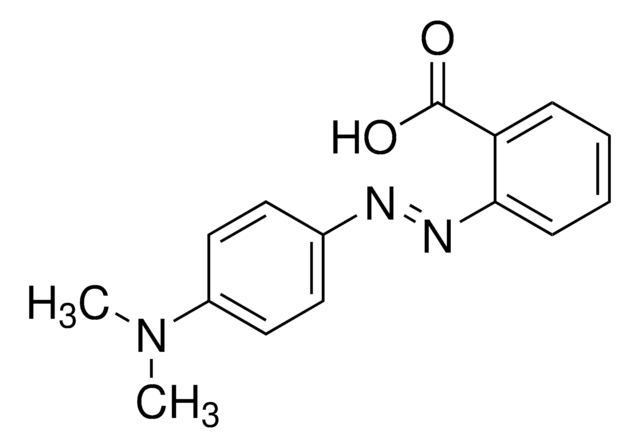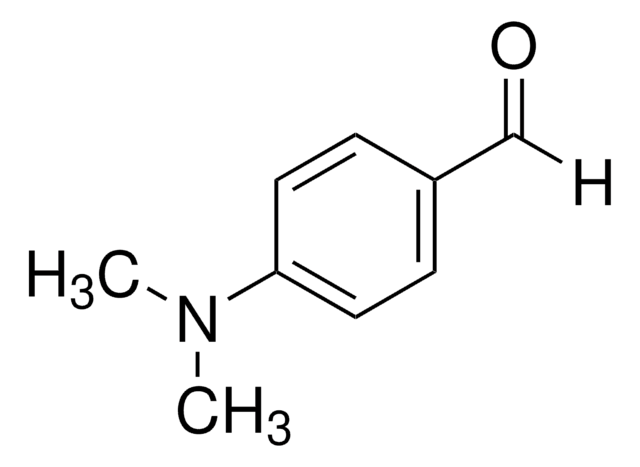About This Item
おすすめの製品
認証
according to GB 4789.30-2016
according to ISO 22964:2017
品質水準
製品種目
BioChemika
シェルフライフ
limited shelf life, expiry date on the label
組成
dist. water, 200 mL
ethanol 95%, 300 mL
methyl red, 0.1 g
テクニック
microbe id | metabolite detection: suitable
アプリケーション
clinical testing
environmental
food and beverages
microbiology
適合性
Enterococcus spp.
Escherichia coli
Klebsiella spp.
Proteus spp.
Pseudomonas spp.
Staphylococcus spp.
bacteria
SMILES記法
CN(C)c1ccc(cc1)\N=N\c2ccccc2C(O)=O
InChI
1S/C15H15N3O2/c1-18(2)12-9-7-11(8-10-12)16-17-14-6-4-3-5-13(14)15(19)20/h3-10H,1-2H3,(H,19,20)/b17-16+
InChI Key
CEQFOVLGLXCDCX-WUKNDPDISA-N
類似した製品をお探しですか? 訪問 製品比較ガイド
詳細
アプリケーション
シグナルワード
Danger
危険有害性情報
危険有害性の分類
Eye Irrit. 2 - Flam. Liq. 2
保管分類コード
3 - Flammable liquids
WGK
WGK 1
引火点(°F)
69.8 °F
引火点(℃)
21 °C
個人用保護具 (PPE)
Eyeshields, Faceshields, Gloves, type ABEK (EN14387) respirator filter
適用法令
試験研究用途を考慮した関連法令を主に挙げております。化学物質以外については、一部の情報のみ提供しています。 製品を安全かつ合法的に使用することは、使用者の義務です。最新情報により修正される場合があります。WEBの反映には時間を要することがあるため、適宜SDSをご参照ください。
消防法
第4類:引火性液体
アルコール類
危険等級II
労働安全衛生法名称等を表示すべき危険物及び有害物
名称等を表示すべき危険物及び有害物
労働安全衛生法名称等を通知すべき危険物及び有害物
名称等を通知すべき危険物及び有害物
Jan Code
08714-100ML-F:4548173342757
08714-BULK-F:
08714-VAR-F:
この製品を見ている人はこちらもチェック
資料
For microbiologists the most fundamental stain was developed in 1884 by the Danish bacteriologist Hans Christian Gram.
Sigma-Aldrich.com presents an article concerning Differentiation of Escherichia coli from coliforms.
ライフサイエンス、有機合成、材料科学、クロマトグラフィー、分析など、あらゆる分野の研究に経験のあるメンバーがおります。.
製品に関するお問い合わせはこちら(テクニカルサービス)












